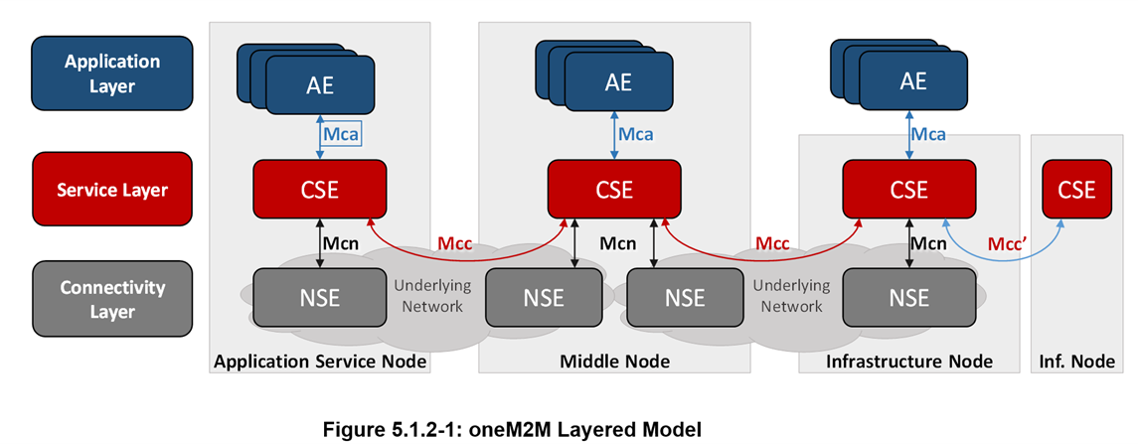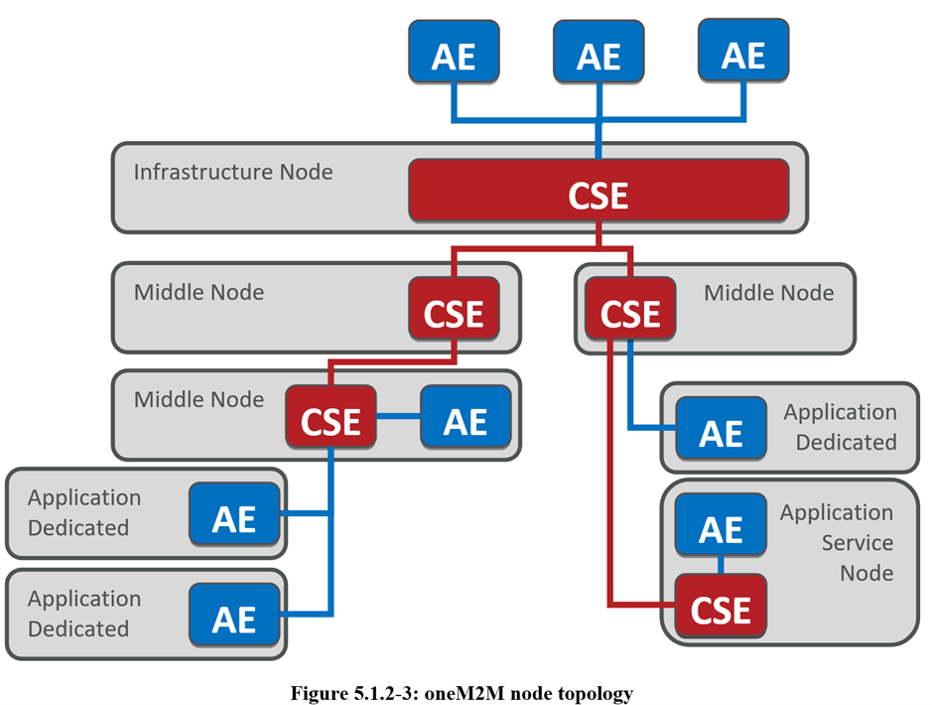oneM2M Layered Architecure Model
oneM2M Layered Model comprises three (3) layers:
- the Application Layer,
- the Common Services Layer
- the underlying Network Services Layer.
Application Entity (AE): The Application Entity is an Entity in the Application Layer that implements an M2M Application Service Logic. Each Application Service Logic can be resident in a number of M2M Nodes and/or more than once on a Single M2M Node. Each execution instance of an Application Service Logic is termed an "Application Entity" (AE) and is identified with a unique AE-ID.
Examples of the AEs include an instance of a fleet tracking application, a remote blood sugar measuring application, a power metering application or a pump controlling application.
Common Services Entity (CSE): A Common Services Entity represents an Instantiation of a Set of "Common Service Functions" of the oneM2M Service Layer. A CSE is actually the Entity that contains the collection of oneM2M-specified Common Service Functions that AEs are able to use. Such Service Functions are exposed to other Entities through the Mca (exposure to AEs) and Mcc (exposure to other CSEs) Reference Points.
Reference Point Mcn is used for accessing services provided by the underlying Network Service Entities (NSE) such as waking up a sleeping device. Each CSE is identified with a unique CSE-ID.
Examples of service functions offered by the CSE include: data storage & sharing with access control and authorization, event detection and notification, group communication, scheduling of data exchanges, device management, and location services.
Network Services Entity (NSE): A Network Services Entity provides Services from the underlying Network to the CSEs.

